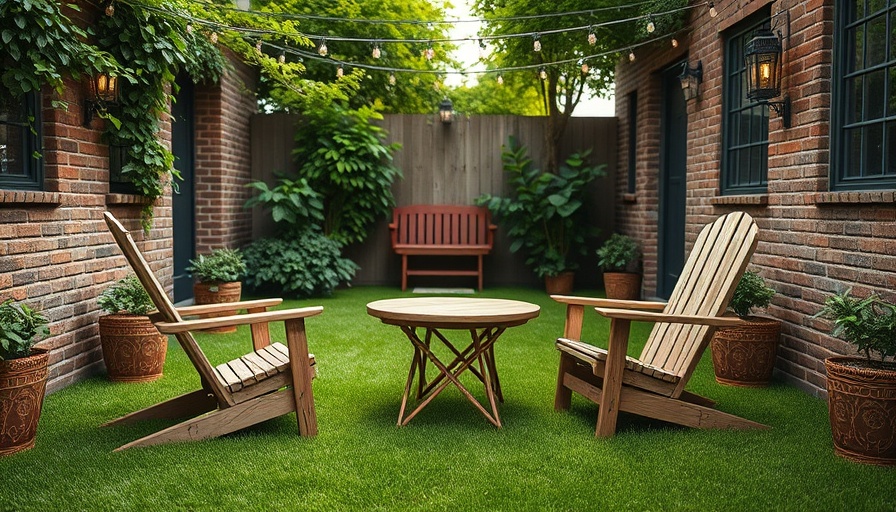
Reviving Outdoor Wood Furniture: A Challenge Worth Undertaking
For residents in Fresno, California, maintaining outdoor wood furniture can feel like a never-ending battle against the elements. With the intense sun and fluctuating temperatures, your beloved patio set can quickly lose its appeal. Recently, I made it my mission to test three different methods to restore my weather-beaten outdoor wood furniture, and the results were more enlightening than I anticipated. Not only can you revive old wood, but you can also extend its life and boost your outdoor aesthetics significantly with the right techniques.
The Three Techniques I Tried
To kick off my restoration project, I decided on three popular methods: sanding, applying wood oil, and using a homemade wood cleaner. Each method has its supporters and skeptics, which made this a compelling test for a wood enthusiast.
Sanding: The Tried-and-True Classic
Sanding is a traditional choice that many swear by, as it removes surface imperfections and allows for a clean base. I used a medium-grit sandpaper and a power sander to expedite the process. While it effectively stripped away the old, weathered finish, it also exposed the raw wood beneath, making it susceptible to further damage. For those tackling this in Fresno heat, make sure to do this early in the morning to avoid the midday sun!
Applying Wood Oil: A Nourishing Approach
Next, I turned to wood oil. This technique is popular for good reason: it penetrates the wood, revitalizing it and adding a layer of protection against the elements. I used a conventional teak oil, following the manufacturer’s instructions closely. The results were stunning. After applying the oil with a cloth, the wood not only regained its original luster, but it also seemed more resilient. Residents in the hotter regions like Fresno may find this method particularly rewarding, as it requires minimal effort and leaves a natural finish.
Homemade Wood Cleaner: A DIY Delight
Last but not least, I decided to make a homemade wood cleaner using vinegar, olive oil, and some essential oils to invigorate the senses. This mixture worked wonders on minor stains and left a pleasant scent. However, while it brightened the appearance slightly, it didn’t provide the same level of nourishment and protection as the wood oil. Nevertheless, it’s an excellent option for quick touch-ups in between more extensive maintenance.
Drawing Connections: What These Techniques Teach Us
The evolution of my outdoor furniture restoration is a microcosm of broader life lessons. Just as with sports, where players refine their technique, adaptation is crucial in our everyday practices. Understanding the strengths and weaknesses of each restoration method can teach us about making informed choices in life.
Final Thoughts: Which Method Worked Best?
After testing all three, it’s clear that the wood oil was the standout solution. It not only restored my furniture’s beauty but also provided the best protection moving forward. If you live in an area with extreme weather conditions like Fresno, this approach is especially beneficial.
Take Action: Revitalize Your Outdoor Space Today!
Ready to give your outdoor wood furniture a makeover? Equip yourself with some wood oil, a sanding tool, or a DIY cleaner and unleash your inner craftsman. Remember, maintaining your outdoor space not only enhances your home but also increases your enjoyment of it!
 Add Row
Add Row  Add
Add 




 Add Row
Add Row  Add
Add 

Write A Comment